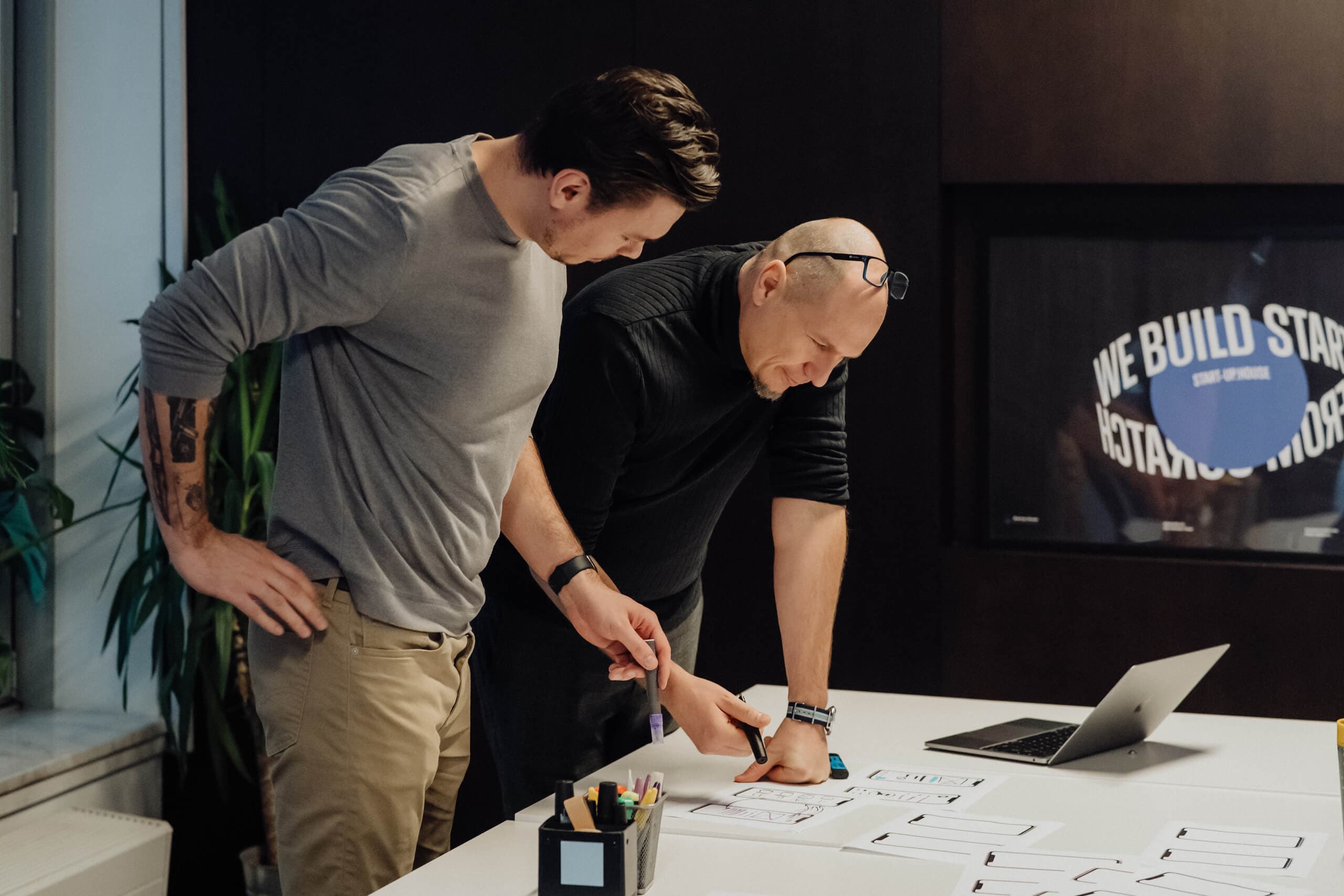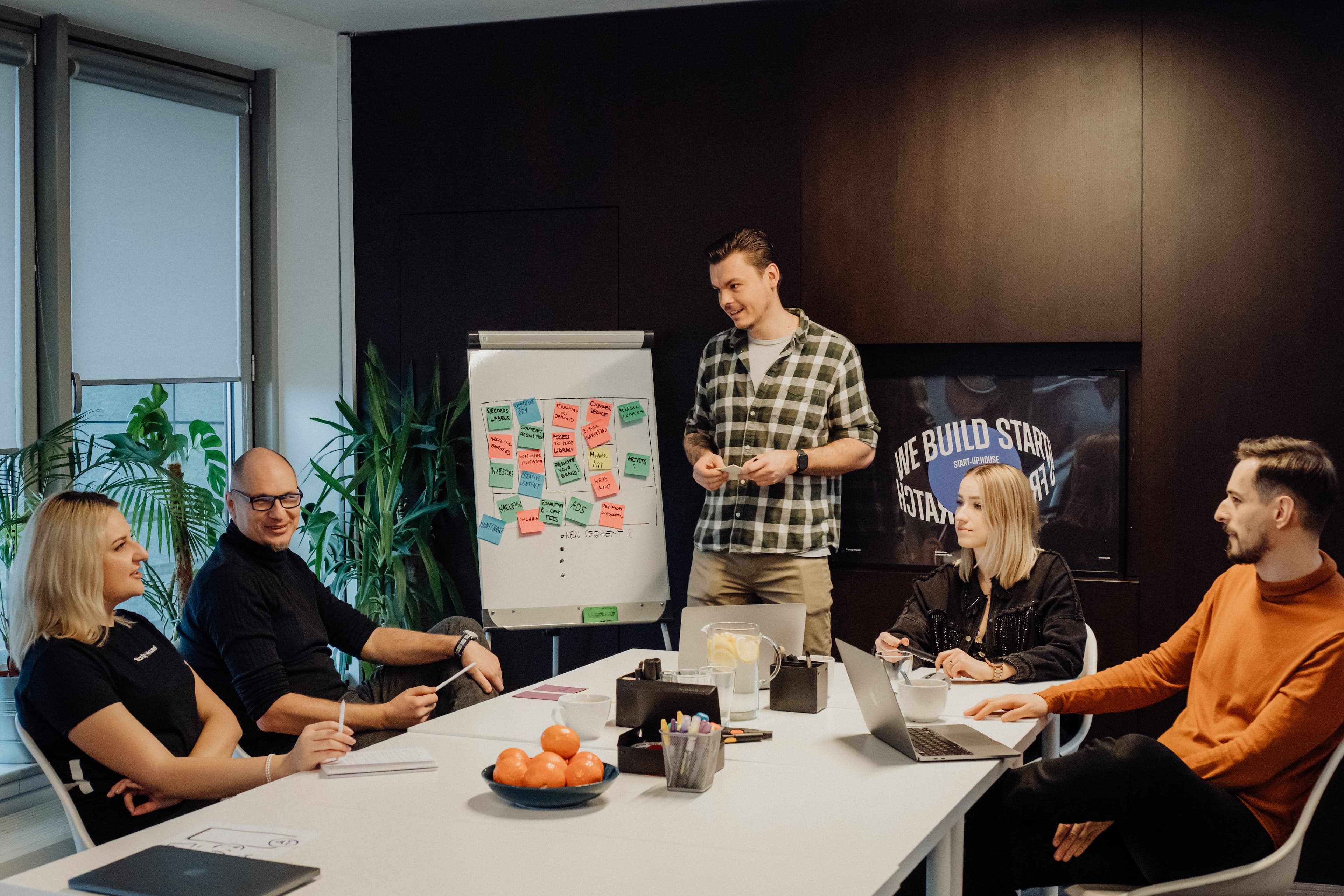🌍 All
About us
Digitalization
News
Startups
Development
Design
Building an AI MVP: Best Practices and Approaches to Achieve Success
Marek Pałys
Mar 29, 2022・5 min read
Table of Content
The Transition from PoC to MVP: An Overview
Building an AI MVP: Best Practices
2. Focus on Core Product Features and Deliverables
3. Budgeting, Team Composition, and Launch Timeline
Conclusion
The journey from ideation to building a viable AI product can be both exhilarating and challenging. Once you have successfully navigated the initial phases, including the formulation and testing of a Proof of Concept (PoC), it's time to shift your focus towards crafting an optimal Minimal Viable Product (MVP). In the AI domain, this transition isn't just about escalating the product scale but also refining and structuring it for enhanced usability and market readiness. In this detailed guide, we unravel the best practices to help you sail smoothly through this pivotal phase of your product development trajectory.
The Transition from PoC to MVP: An Overview
Transitioning from a PoC to an MVP signifies a paradigm shift in your approach to product development. While a PoC aims to validate the technological feasibility of an idea, an MVP focuses on readying the product for market launch, encompassing facets such as scalability, user experience, data management, and more. An essential aspect of building an MVP is the development of a robust Machine Learning Operations (MLOps) pipeline that streamlines various processes including data transformation and model training. Let’s delve deeper into the stages and practices that can facilitate this transition effectively.
Building an AI MVP: Best Practices
1. Prioritizing User-Centric Design
At the heart of any successful product lies a seamless user experience. Hence, initiating your MVP journey with a strong emphasis on understanding your user is pivotal. Delve into the intricate dynamics of user needs, preferences, and the challenges they face in the current market scenario. Here, we dissect the steps to foster a user-centric approach:
A. Understanding the User
Identifying Your Audience: Grasp who your potential users are. This might involve considering various teams or individuals who would directly interact with your product. Analyzing their specific needs and preferences will lay a strong foundation for your MVP.
User Interactions with the Product: Define the primary actions users would undertake with your product. It's crucial to prioritize the functionalities that address the majority of your user base during the MVP stage.
Mapping the User Journey: Craft detailed user journeys based on different personas. This process should unveil potential friction points and uncover avenues to enhance user satisfaction and product value.
Value Proposition: Ensure that your product delivers tangible benefits to users, meeting the promises communicated during the promotional phases.
2. Focus on Core Product Features and Deliverables
Once you have a grasp of your user needs and preferences, the next step is delineating the core features that should embody your MVP. Let's explore how to strategically align your product vision with user requirements:
A. Feature Selection Based on Business Maturity and Vision
Traditional SaaS Products: For products aiming to offer services like CRM systems or data visualization tools, the focus should be on developing vital features like a web application, secure login mechanisms, and seamless workflows.
AI/ML-centric Products: In scenarios where the product is centered around AI/ML predictions, the primary emphasis should be on creating a robust MLOps pipeline, often sidelining the need for extensive front-end development.
B. Strategic Focus on Core Features
Aligning Features with Core Services: Determine the core services your product intends to offer and align your feature development accordingly.
Avoiding Over-Emphasis on Aesthetics: While aesthetics are important, the initial focus should be on developing functionalities that significantly enhance user experience and benefits.
3. Budgeting, Team Composition, and Launch Timeline
An MVP project demands meticulous planning encompassing aspects like budget allocation, team composition, and defining a realistic timeline for launch. Here, we discuss the nuances of each of these aspects:
A. Budget Allocation and Planning
Detailed Budget Planning: Formulate a budget that aligns with the scope of your MVP, considering aspects like team size, technological investments, and promotional strategies.
Avoiding Scope Creep: Resist the urge to expand the scope excessively, which can lead to increased complexity and resource drain.
B. Assembling the Right Team
Crafting a Lean Team: Develop a team that embodies the philosophy of the MVP – lean yet equipped with the necessary skills to drive the project to success.
Flexible Team Structure: As the project progresses, be prepared to scale your team based on emerging requirements and learnings.
C. Timeline for Launch
Realistic Timeline Creation: Establish a timeline that is realistic, taking into consideration the various phases of development, testing, and market launch.
Setting Milestones: Set clear milestones to track the progress of the project and make necessary adjustments as needed.
Conclusion
Embarking on the journey of building an AI MVP is a significant milestone in your product development pathway. Transitioning from a PoC to an MVP encompasses a broader scope, requiring an amalgamation of technological robustness and market readiness. By adhering to the practices of fostering a user-centric approach, focusing on core product features, and meticulous planning concerning budget, team, and launch timeline, you set a strong groundwork for a successful product launch.
Remember, the objective is not just to build a product that aligns with your business vision but to create a solution that resonates with your target audience, meeting their expectations and addressing their pain points effectively. As you navigate through this phase, keep the lines of communication open with your potential users, seeking their feedback and making informed adjustments, ensuring your product not only sees the light of the day but thrives in the competitive market landscape.
Harness these insights and best practices as you embark on this exciting journey, aiming to carve a niche in the market with your innovative AI MVP. Good luck!
FAQ
What is an AI MVP?
An AI MVP, or Minimum Viable Product, is a product with enough features to satisfy early customers while also providing feedback for future product development. In the context of AI, it means incorporating machine learning or other AI features into this MVP to solve a specific problem or enhance functionality.
Why is building an AI MVP necessary?
Creating an AI MVP allows businesses to test the viability of their product in real-world settings before fully developing it, saving time and resources and ensuring that the final product meets consumer needs and expectations.
How does the user journey influence the AI MVP development?
Mapping out the user journey helps in understanding and addressing potential points of friction, identifying new user problems your product can solve, and enhancing the overall user experience, ensuring the MVP is user-centric and caters to genuine market needs.
What are the core features of an AI MVP?
The core features should align with the primary service your product aims to provide, focusing on functionalities that enable a great user experience and benefits, while avoiding unnecessary complexities.
What role does MLOps play in building an AI MVP?
MLOps, or Machine Learning Operations, facilitates the seamless automation of data transformation, model training, and deployment, thus playing a critical role in the scalability and efficiency of an AI MVP.
How do I budget for an AI MVP?
The budgeting involves planning, scoping, and allocating financial resources efficiently to cover all aspects of the MVP development, including technology acquisition, team allocation, and marketing, while avoiding overspending on non-essential features.
What is the importance of focusing on user actions during the MVP development?
Focusing on user actions helps in identifying and prioritizing features that enable the required actions for most users, ensuring a streamlined and user-friendly product that adds value to the user experience.
How to select a team for building an AI MVP?
The team should be lean, comprising individuals with the necessary skills and expertise to make the project a success. As the project evolves, the team can grow to accommodate emerging requirements.
What considerations should be kept in mind regarding scalability when building an AI MVP?
Scalability considerations include ensuring the infrastructure can handle increased user loads and that the architecture supports expansion and integration of additional features in future iterations.
How does an AI MVP differ from a Proof of Concept (PoC)?
While a PoC is focused on validating the technological feasibility of an idea, an MVP moves beyond this to develop a market-ready product that integrates user feedback and real-world application insights.
How does focusing on core product features benefit the AI MVP development process?
Focusing on core features ensures that the product remains user-centric, meeting the essential needs and expectations of the target audience without getting bogged down in unnecessary complexities.
What is the role of user personas in developing an AI MVP?
User personas help in understanding different user needs and motivations, aiding in the creation of a product that caters to various user segments effectively.
How do I ensure that my AI MVP is commercially viable?
Ensuring commercial viability involves creating a product that not only leverages technological feasibility but also aligns with market demands and consumer desires, offering a solution that users find valuable and are willing to pay for.
What insights can be gathered from the real-world interactions of users with the MVP?
Real-world interactions provide insights into user behavior, preferences, and pain points, which can be used to further refine the product, making it more aligned with user needs and expectations.
How can future iterations of the product be influenced by the MVP phase?
The MVP phase allows for the collection of user feedback and real-world insights that can shape the development roadmap, helping to prioritize features and improvements that align with user needs and market demands, and avoid building a product that doesn't resonate with users.

 Don't miss a beat - subscribe to our newsletter
Don't miss a beat - subscribe to our newsletterYou may also  like...
like...

Understanding Key Metrics: A Beginner’s Guide to MVP Success
A practical guide for beginners on measuring MVP success, from user engagement to conversion, retention, and scaling strategies.
Alexander Stasiak
Feb 07, 2025・15 min read

Top Traits of an Outstanding Software Development Team
The success of any software project depends on the team. See the top traits that turn good dev teams into outstanding ones.
Alexander Stasiak
Apr 18, 2025・12 min read

Choosing the Right Software Development Partner: A Practical Guide for Startups
The right software development partner can define your startup’s success. This guide shows how to choose one that fits your goals and needs.
Alexander Stasiak
Dec 30, 2024・10 min read




